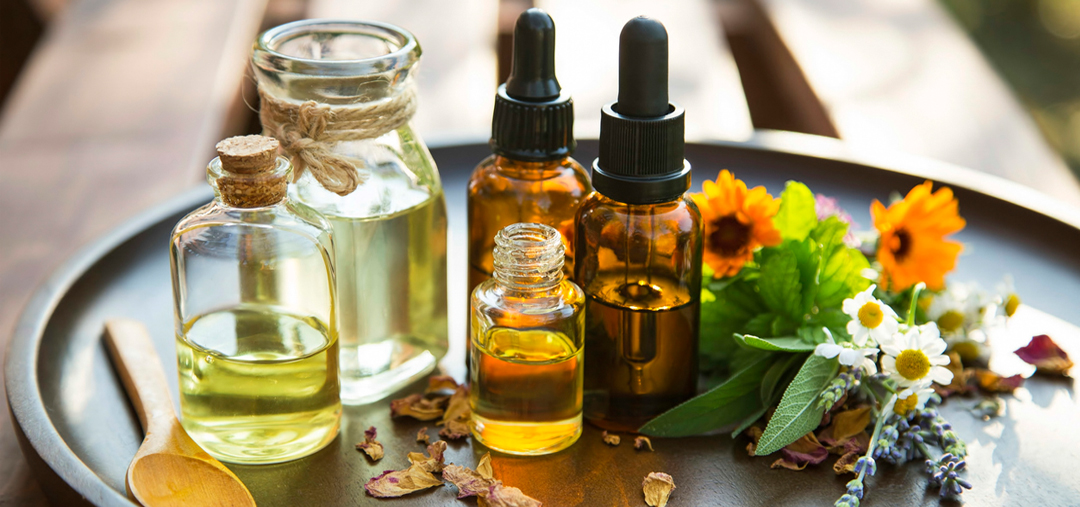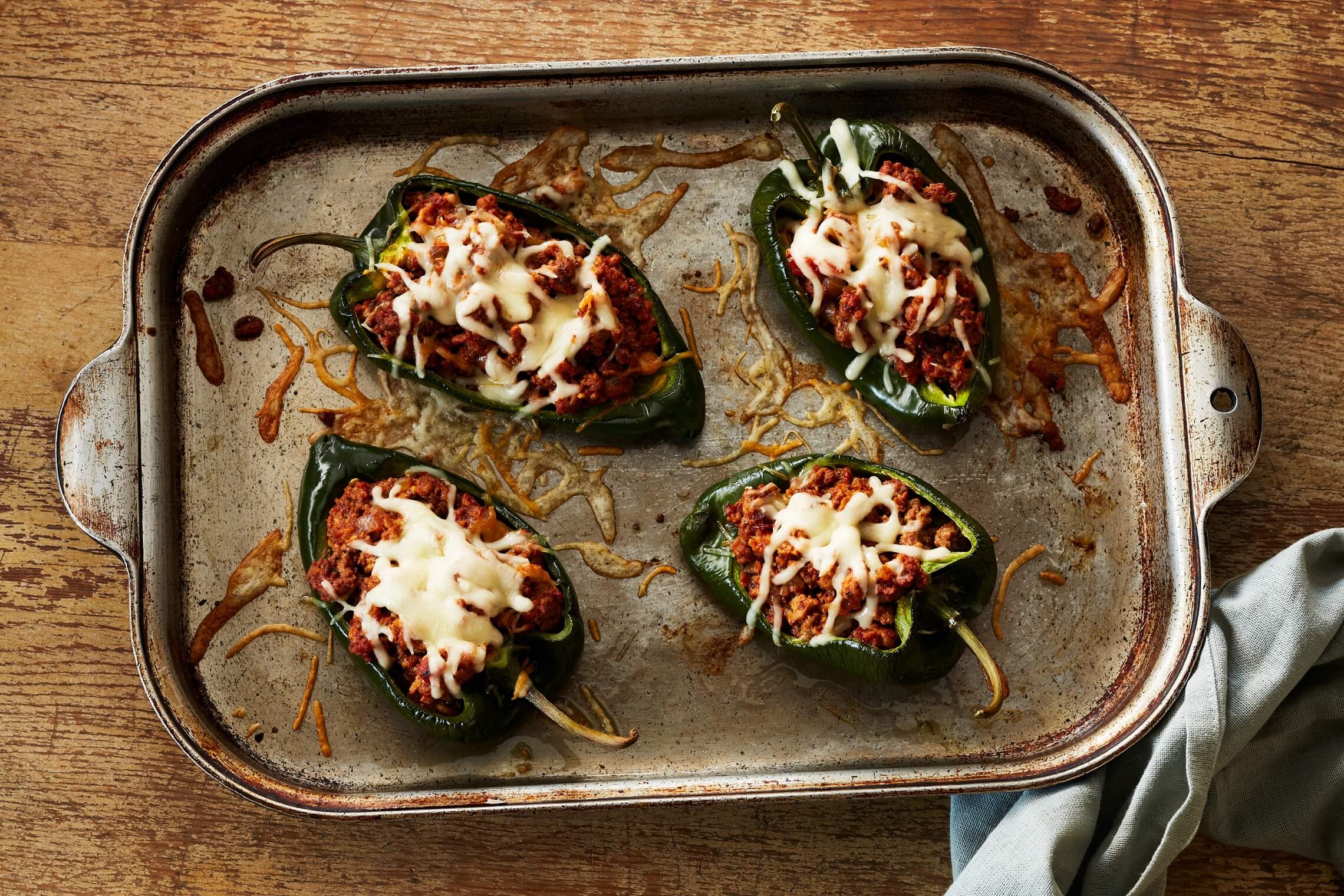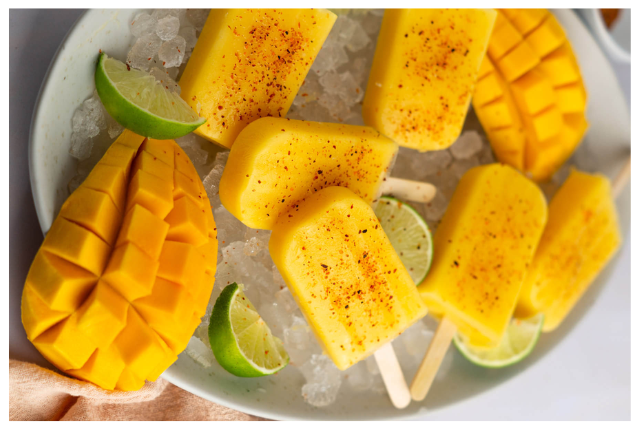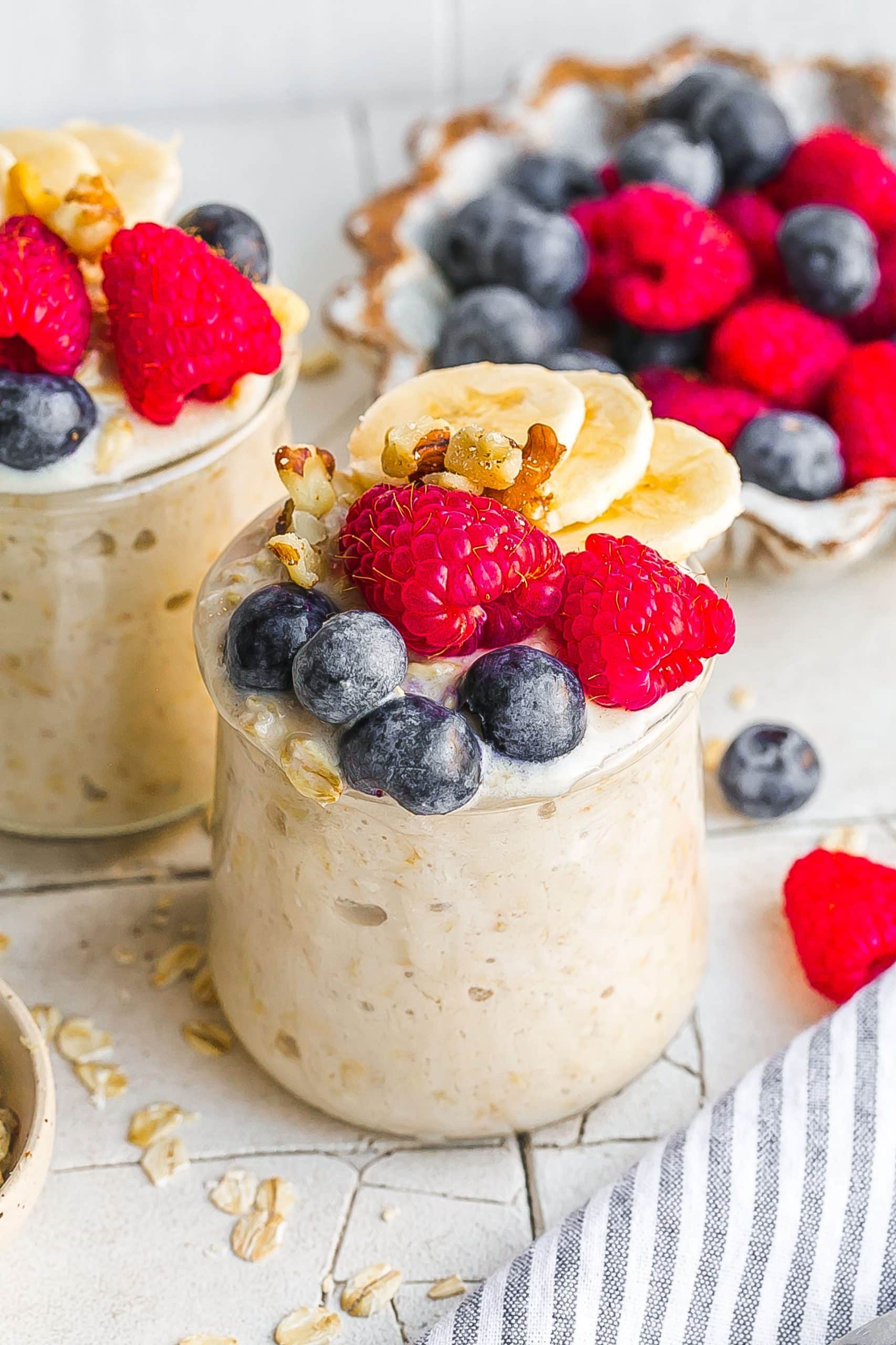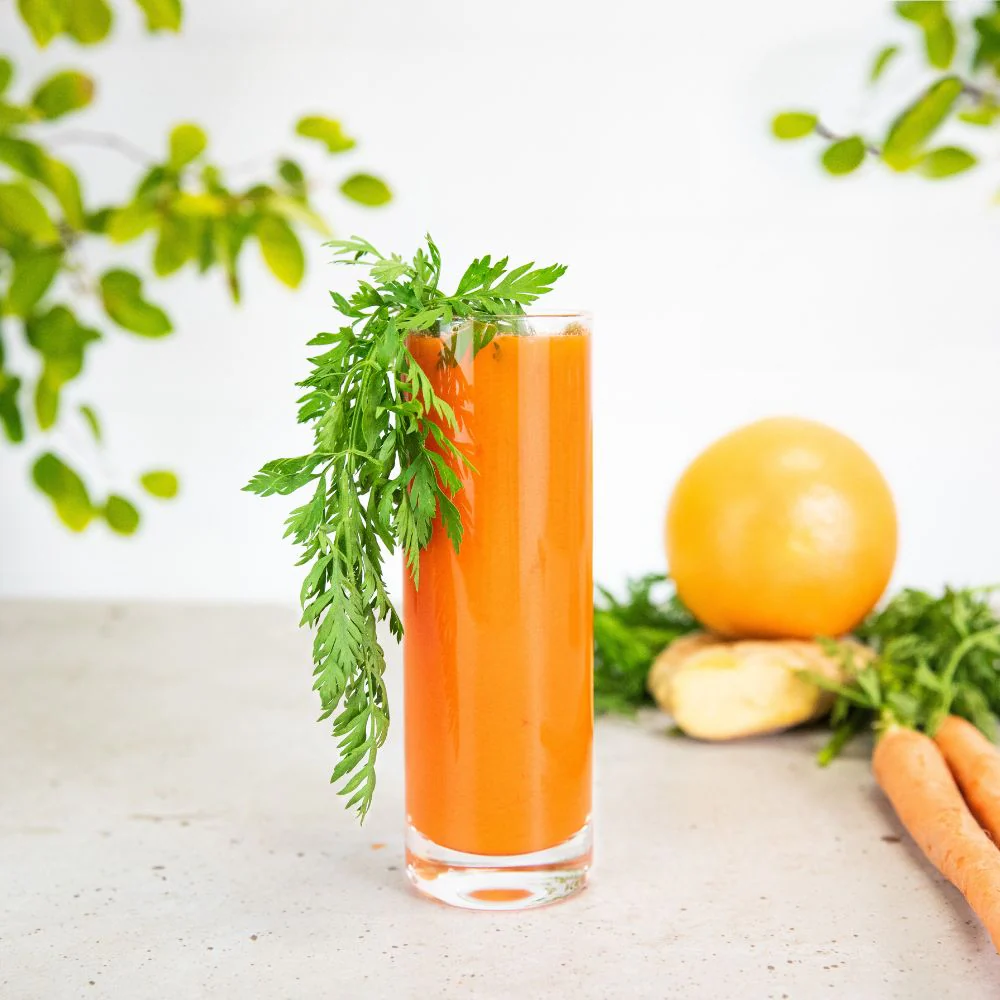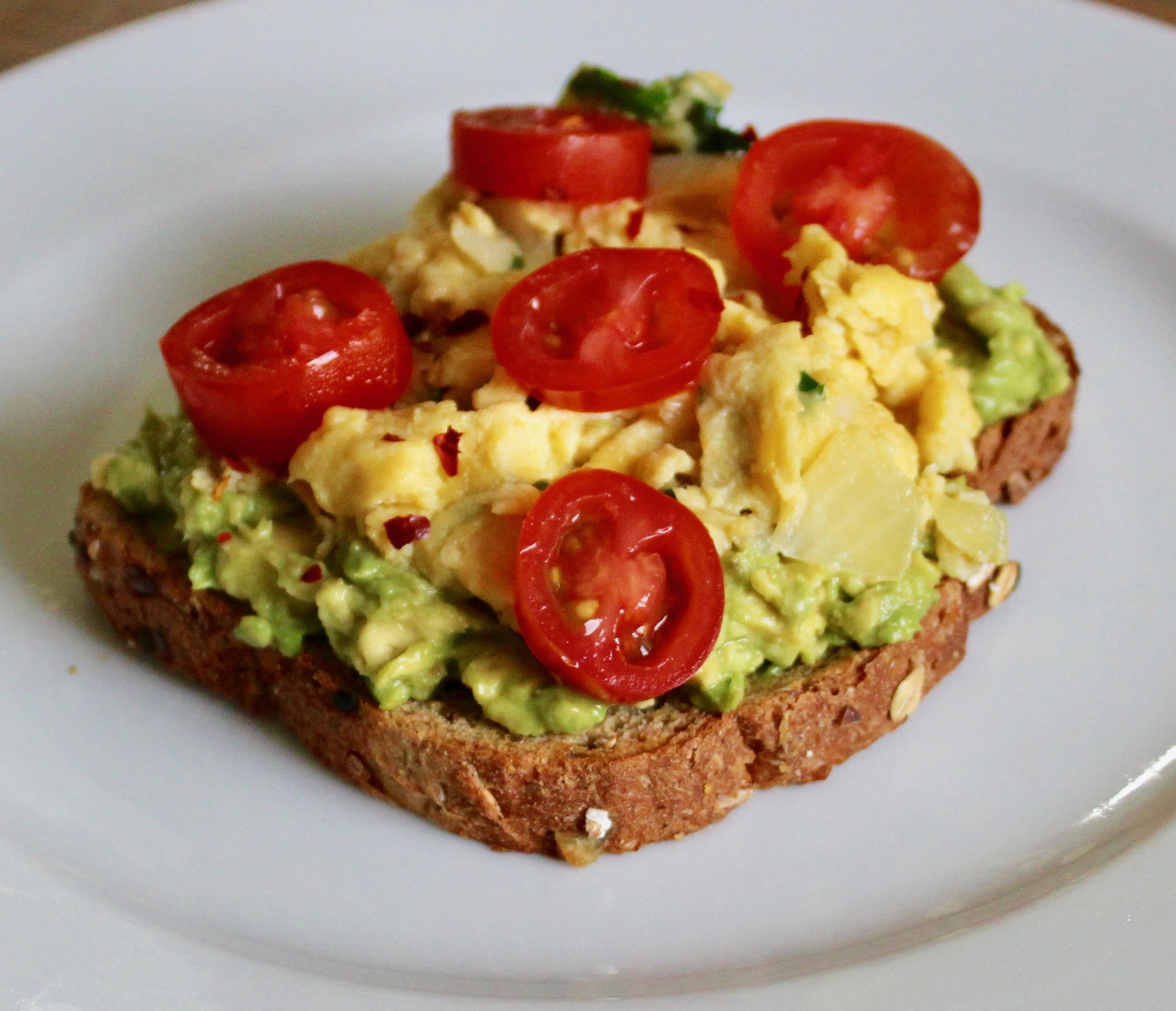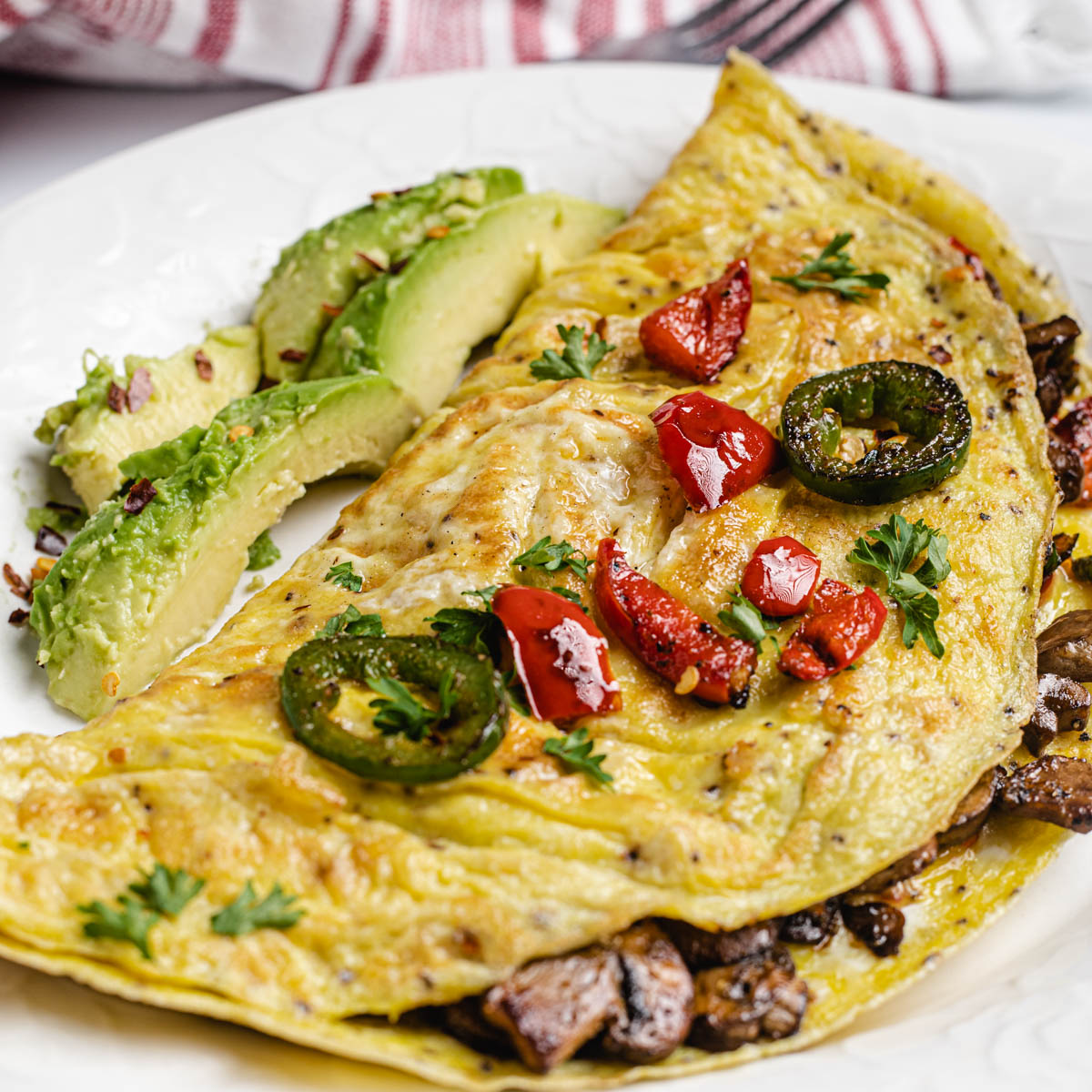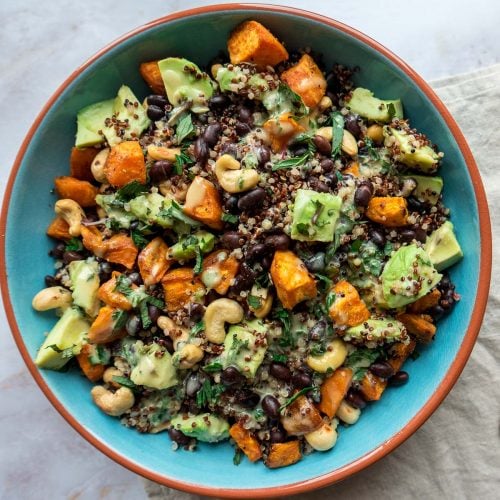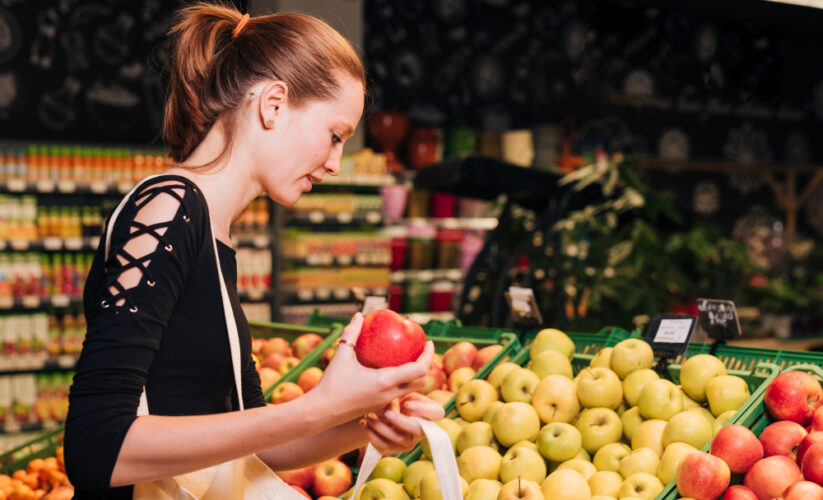
Fruits and vegetables are delicious and good for you. That’s the easy part. But when did buying them become so complicated? These days, picking out a head of lettuce can make you feel as though you need advanced degrees in agriculture, chemistry, economics, and nutrition.
Among the questions you may have: What am I getting when I pay for organic, and is it worth it? Do seasonal and local foods taste better, and are they better for me? When is frozen or canned produce a good alternative? And how can I balance these issues with the needs of my family?
That’s a lot to consider when you’re just trying to get dinner on the table. To help you thread your way through the thicket, here’s the most up-to-date information on the most important issues. Your answers will depend on where you live, your values, your budget, what’s available in your local markets, and, of course, what you like to eat.
What Is Organic?
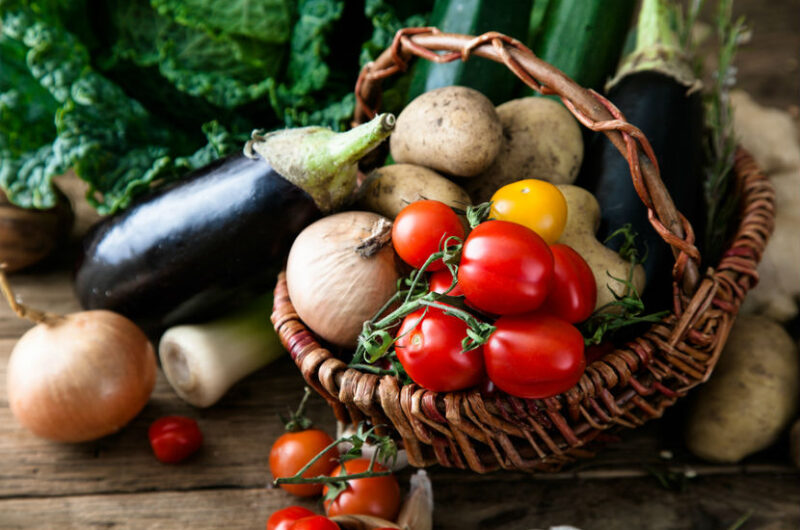
No synthetic fertilizers or pesticides. That’s the main thing to know about how organic produce is grown. Organic farmers instead use compost to enrich the soil and beneficial insects to kill plant-destroying pests. To use the word organic on their labels, growers must be certified under federal rules.
Once easiest to find at farmers’ markets, organic fruits and vegetables are now standard fare alongside conventional foods in supermarkets and big-box stores. But farmers’ markets and community-supported agriculture programs (CSAs — produce subscriptions bought directly from farms) remain the purist’s choice. Their goods come from small farms that stick most closely to the original organic ideal.
Since organic regulations took effect in 2002, gigantic organic farms have emerged and sometimes drawn criticism for using some of the methods of mass-scale agriculture, such as growing immense fields of just one crop for national distribution. But they also have slashed organic food prices and brought organic produce to neighborhood supermarkets. Both big and small organic farms mean fewer chemicals in the environment.
Pesticide-free has no legal definition, but it may signify an operation that’s in the three-year transition to organic status or one that functions organically but chooses not to be certified. (Because organic certification is costly, some farmers don’t bother, even though they practice organic methods.) Sustainable is a broad term that means farming in ways that build the soil (instead of depleting it) and don’t cause pollution. Shopping at farmers’ markets lets you ask the farmers directly how they grow their crops.
How Organic Stacks Up
Flavor
Organic farmers like to say their strawberries or carrots taste sweeter (the food editors of Martha Stewart Living tend to agree). But multiple variables can affect taste, including plant variety, sun, soil, farming practices, and ripeness. Small-scale organic farmers do often plant tastier varieties — the kinds that won’t stand up to shipping but are perfect for local markets — and pick their fruits and vegetables when they’re riper (that is, sweeter).
Food Safety
Pesticide residue is part of the equation, especially if you’re feeding young children, whose systems are less developed and may be more sensitive to toxins than adults. The EWG, a nonprofit environmental research organization, calls the 12 fruits and vegetables that carry the most pesticide residue
These include (in order of most residue to least): peaches, apples, bell peppers, celery, nectarines, strawberries, cherries, kale, lettuce, imported grapes, carrots, and pears.
The EWG’s “clean 15,” the fruits and vegetables with the least pesticide residue, are (in order of least residue to most): onions, avocados, sweet corn, pineapples, mangoes, asparagus, sweet peas, kiwifruits, cabbages, eggplants, papayas, watermelons, broccoli, tomatoes, and sweet potatoes. Grapefruit is number 16. Oranges and tangerines, staples of midwinter, fall midway on the list of the 47 fruits and vegetables tested.
The U.S. Department of Agriculture (USDA) says organic is cleaner but takes care to point out that “measured residues on most products, both organic and nonorganic, do not exceed government-defined thresholds for safe consumption.”
When it comes to foodborne illness, organic isn’t immune, as the 2006 outbreak of E. coli in organic bagged spinach proved. Contamination is all about who or what touches the produce along the way. Distribution of mass-produced foods will spread a tainted batch far and wide, while small farms have a narrower reach. Organic food can’t be irradiated, a controversial technique approved to kill pathogens in some foods, or genetically modified, a practice whose long-term safety is unknown.
Cost
Organic is still more expensive than conventional produce, for the most part because many of the farms are small and the farming methods are labor-intensive. Wholesale prices tracked by the Rodale Institute, a nonprofit organic-research group, vary widely from market to market. Organic acorn squash, for example, costs 20 percent more than conventional in Seattle but about 200 percent more in Boston.
If you have limited dollars to spend on organics, devote them to organic varieties of the EWG’s “dirty dozen.” You’ll get the most pesticide-free bang for your buck. You can also save by buying conventional varieties of “the clean 15.”
Environment
Hands down, organic is the winner here: By definition, buying organic means fewer chemicals on the land and in the water and air. Runoff from chemical fertilizers used on Midwestern corn and soy fields, for example, has created a 3,000- square-mile “dead zone” in the Gulf of Mexico, where algae grab all oxygen out of the water, starving any other life.
Nutrition
Whether organic produce contains more nutrients than conventional is a matter of dispute, with many scientific studies backing both sides. The jury is still out.
Bottom Line
Buy organic whenever you can; it’s best for the environment. Exceptions: if it’s flown in from across the world and you have a beautiful, local — but not organic — carrot right under your nose, or if it’s mass-produced and you have the option to buy from a reliable small farmer instead.
What Is Local?
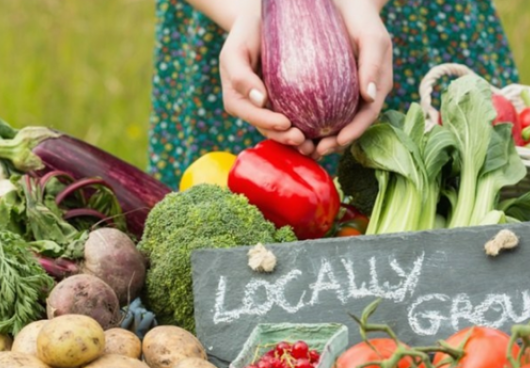
Locavores, people who seek out locally grown foods, want to cut energy use by reducing the distance their broccoli or lemon wedges travel to their plates. The rule of thumb is that most produce is transported 1,500 miles to market; local foods travel fewer than 100 miles. Those figures come from a study of Midwestern markets, and numbers depend on where you live and the season. Locavores also want to support farmers in their area. (Author Barbara Kingsolver wrote about her experiment with growing her food and eating locally in the 2007 book “Animal, Vegetable, Miracle.”)
The concept works best for people who live in places with warm climates and lots of farms, such as California. For residents of most other states, going local takes more effort. In winter, root vegetables, some hothouse-grown foods, and canned and frozen produce have to suffice. Banana lovers would be pretty much out of luck in any state but Hawaii.
How Local Stacks Up
Flavor
Local has a leg up because fruits and vegetables that won’t be shipped far can be picked riper — and the riper they are, the better they taste. This is especially true of sweet summer crops, including tomatoes, peaches, and nectarines, whose sugars develop late and fade fast. (Citrus, apples, avocados, and beets and other root vegetables store and travel better.) In addition, fruit and vegetable varieties grown for shipping are usually bred for strength, not flavor.
Food and Safety
Eating food from farmers you know lets you ask them what chemicals and growing methods they do or don’t use. Ideally, the farmers will be less likely to cut corners to drive down prices if they have a relationship with their consumers.
Cost
A mixed bag that depends entirely on what’s grown near you and what season it is. Theoretically, cutting transportation costs would mean lower prices. But farmers who sell small amounts at farmers’ markets have higher costs per pound than giant farms that send boxed and bagged spring mix or carrots all over the country. So you won’t always find bargains. The money you spend on local foods, though, helps the surrounding community.
Environment
Buying locally means fewer “food miles,” the measure used to count how far your dinner traveled to get to your table. This can mean less energy used and less pollution. It’s worth noting that food miles don’t take into account the energy used to produce and harvest food (by operating farming machinery, for example), which can equal or exceed the energy needed to transport it. So miles don’t always tell the whole story.
Also on the plus side: Supporting local farmers makes small farms more economically viable, creates carbon-absorbing greenbelts, and helps teach children where their food comes from.
Nutrition
Local foods are consumed closer to the time they’re harvested, before nutrients dwindle. They also spend less time in transit; long periods of travel can sap produce of nutrients.
Bottom Line
Support small farms near your home. That can mean buying conventional produce locally over organic from far away. Get to know the people growing your food. Create a relationship of mutual trust. Your purchases speak volumes at the register. Localharvest.org provides listings of local markets, CSA programs, and more, searchable by ZIP code.
What Is Seasonal?
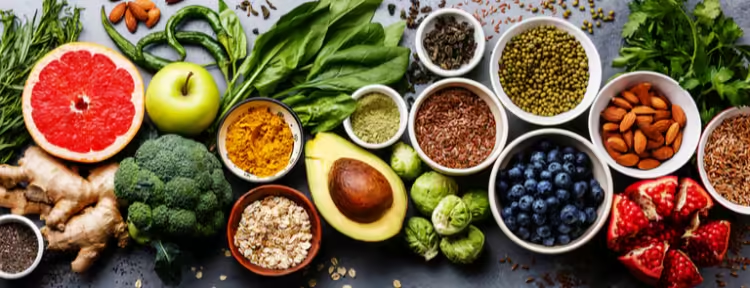
Ideally, we’d always buy fresh fruits and vegetables at the height of their growing season because they’re better and cheaper. Think about the pricey, pinkish tomatoes in stores right now, compared with the red, juicy bargains of late August.
But it’s not always easy, especially in winter. One approach is to make menus seasonal whenever possible and then augment them with preserved goods. High-quality frozen, canned, and jarred produce is increasingly available in stores, and home canning is making a comeback. In addition, more local growers are preserving and freezing peak produce and selling it at winter farmers’ markets. Many vegetables and fruits — green beans, corn, peas, edamame, berries, and mangoes, to name just a few — freeze well. Tomatoes, peaches, nectarines, and pears are canning stars.
But even in winter, there are many seasonal delights to be had: oranges, grapefruits, pomegranates, winter squashes, spinach, cabbages, broccoli, carrots, potatoes, kale, parsnips, beets, Swiss chard, and more.
How Seasonal Stacks Up
Flavor
In-season, fresh produce tastes best — if it’s grown well and consumed soon after picking. But out of season, the argument can be made that fruits and vegetables frozen at the height of their season are more flavorful than those shipped from far away. Freezing maintains flavor better than canning, but it can damage texture. Frozen berries make good smoothies, however, frozen vegetables work well in stews, braises, and other hearty winter fare.
Food Safety
One consideration is where produce is grown. In general, U.S. growers use lots of pesticides, but tests show that imported produce has more residue. Imported produce tends to fill seasonal gaps here (grapes, for example, which are high on the residue list). Check packages of frozen fruits and vegetables for their country of origin. Lots of processed food is imported. China, which increasingly exports fresh and processed fruits and vegetables, including organic ones, has had major problems with food contamination and lax production practices in the past few years.
One interesting benefit for frozen and canned goods: According to Organic Center, an advocacy group supported by organic food companies, freezing or canning can actually reduce pesticide residue in some fruits and vegetables, via washing, peeling, or cooking. Apple juice and applesauce, for example, contain less residue than fresh apples. Processed green beans have only a tiny proportion of the pesticides found in fresh, and canned peas and tomatoes are cleaner than fresh. But processed strawberries show little difference. Presumably, thorough washing and peeling of fresh produce would achieve the same results at home, though the study doesn’t say.
Cost
Come January and February, farmers almost can’t give away all the beautiful kale; in summer, it’s tomatoes and zucchini. In general, fresh fruit and vegetables cost less than frozen or canned, according to USDA analyses. But that varies by season and region, so it’s best to check for yourself.
Environment
Buying South American asparagus or grapes in winter requires more fossil fuels, which can generate more pollution, than buying foods grown closer to home. Out-of-season hothouse and hydroponic foods, such as tomatoes and lettuce, may also require significant amounts of energy if growers are not using energy-efficient methods.
Nutrition
Seasonal means better nutrition because many out-of-season vegetables and fruits — say, winter peaches from South America or avocados from Mexico — have to travel long distances and lose nutrients along the way.
In deep winter, frozen and canned vegetables are good options; they tend to be picked fully ripe at the height of the season, their nutritional peak. Canning without cooking can preserve most nutrients. Watch out for salt in canned vegetables, however, and sugar added to canned fruit and some frozen berries.
Bottom Line
We’ve become spoiled by out-of-season produce, but it’s time to get back to basics. Buying with the season saves money, helps you stay local, and makes for the best-tasting food. Canning and freezing can help. Think of how incredible that first fresh strawberry will taste if you’ve had to wait all winter for it.
And What About. . .?
GMO
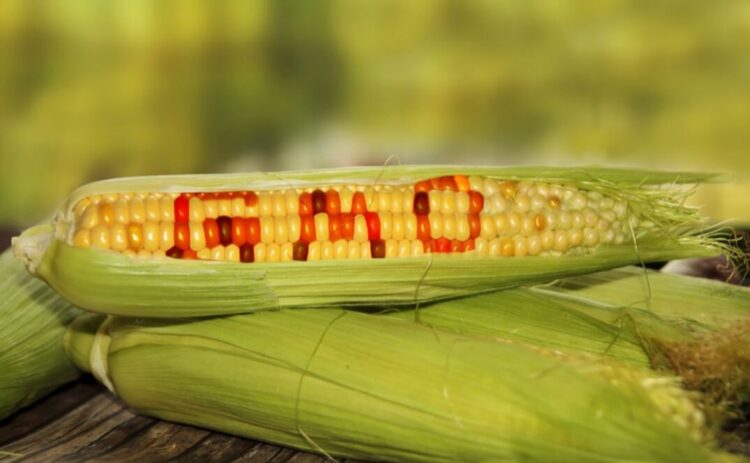
Genetically modified organisms, also called genetically engineered (GE) or biotech foods, are bred using techniques that allow scientists to introduce genes from other plant varieties, animals, bacteria, or viruses into a plant to give it certain traits. The technology is used widely to create crops resistant to pests or able to withstand chemical bug and weed killers.
Corn, soy, and canola are some of the largest GMO crops, but other vegetables and fruits aren’t far behind. According to the True Food Network, a project of the anti-GMO Center for Food Safety, biotech versions of 32 common fruits and vegetables, including grapefruits, apples, carrots, and cabbages, are being field-tested. Corn, papayas, radicchio, and yellow crookneck squashes are already on the market.
Advocates say biotechnology is the way to create superfoods to feed the world. Critics are concerned about the potential for environmental effects (because GMO traits can spread widely) and health problems down the line (because the foods are so new, their long-term effects on humans aren’t known).
How can you tell if you’re buying a fresh GMO fruit or vegetable? If the PLU (price look-up) code on the sticker has five digits, and the first one is eight, it is. (Four-digit numbers starting with eight are not.) The labeling system, however, is voluntary.
Irradiation
Using radiation (gamma rays, X-rays, or an electron beam) to kill diseasecausing bacteria and other microbes has been practiced for years on many foods, including herbs, spices, meat, and produce. Government and industry groups see the method as a way to improve food safety, because it destroys pathogens such as salmonella and E. coli. But consumers have resisted, wary of any technique that uses radiation.
Irradiation doesn’t make food radioactive. But depending on the dose, it can change a food’s texture and taste. Organic foods cannot be irradiated, and many organicfood advocates prefer other methods of getting pathogens out of the environment, such as keeping cattle-feedlot manure out of streams.
Irradiated food must be labeled with a flowerlike symbol that reads “treated with irradiation,” but the food industry would like to remove any labeling requirement.
Fair Trade
Mainly seen on bananas and coffee, this label indicates that the farmers who grew the food received a fair price for it. Fair-trade crops often cost more, but not always. There is no clear effect on flavor, nutrition, and safety.
Hothouse & Hydroponic
Growing produce in hothouses makes it possible to buy fresh even in winter, with varying effects on flavor. Hydroponic produce — often tomatoes and greens — are raised indoors, under lights, in nutrient-packed water, or in a growing medium instead of in soil. Yields are high, but energy and water use can be, too. The good news is that growers are turning more and more to “green” options, including solar and geothermal technology, to make these methods more energy-efficient.
Prepackaging
We’ve all seen it: chopped fresh produce, including celery sticks, broccoli florets, and melon balls, sold neatly wrapped in plastic and ready to go. But it is not a good buy. Flavor is compromised in the processing (the produce is usually treated to keep it from browning or spoiling), precut produce is expensive, and the plastic packaging is wasteful and can clog landfills. Plus, more processing means your food is handled by more people before it reaches your plate.






